Are you interested in World War II history? If so, one aspect of it is the internment camps for Japanese citizens. Manzanar National Historic Site is one of these fascinating places situated in California. It is full of information and is well worth a stop on your trip.
On our latest California road trip, we started off in our favorite city San Francisco and then tried to hit as many national parks as possible. We stopped at the big ones like King’s Canyon, Death Valley, and Joshua Tree, but we also made some smaller stops as well. One of my favorites was Manzanar Internment Camp, which is now a national historical site.
In this article:
- What is Manzanar Internment Camp?
- History of Manzanar
- Where is it?
- What to Expect at Manzanar National Historic Site
- Manzanar Operating Hours
- Is it good for kids?
- Other Things to do Nearby
- Where to Eat

What is Manzanar Internment Camp?
During World War II and just before it, there was a strong anti-Asian and anti-Japanese sentiment in the United States. The Japanese invasion of Pearl Harbor sparked a backlash against American Japanese people, leading to their internment in government-run residential camps.
Glossed over in many history books and school lessons, is the undeniable fact that the U.S. during World War II made the decision to relocate many Japanese and Japanese-Americans into internment camps from fear that they might be disloyal.

One of the major events at Manzanar was the loyalty questionnaire, which aimed to root out Japanese-Americans who were more loyal to Japan than to America. Surprisingly, some Japanese-Americans didn’t have loyal ties to Japan, despite having family there.
They were Americans at heart, but the questionnaire made it difficult for them to choose loyalty. They didn’t want to completely defy their upbringing and family history, but that was what was required by the US government in order to be considered loyal citizens. Even if they passed the loyalty test, it didn’t guarantee their release from the camps. It only meant they might receive different treatments, like working outside of the camp.

History of Manzanar
Like most of the internment camps, Manzanar was chosen due to its isolation and remoteness. The Owens Valley site was a former homestead and apple orchard. However, when the city of Los Angeles diverted water from Owens Valley, the orchard, like most of the other farming operations in the valley, failed, and most of the region reverted to semi-arid desert land.
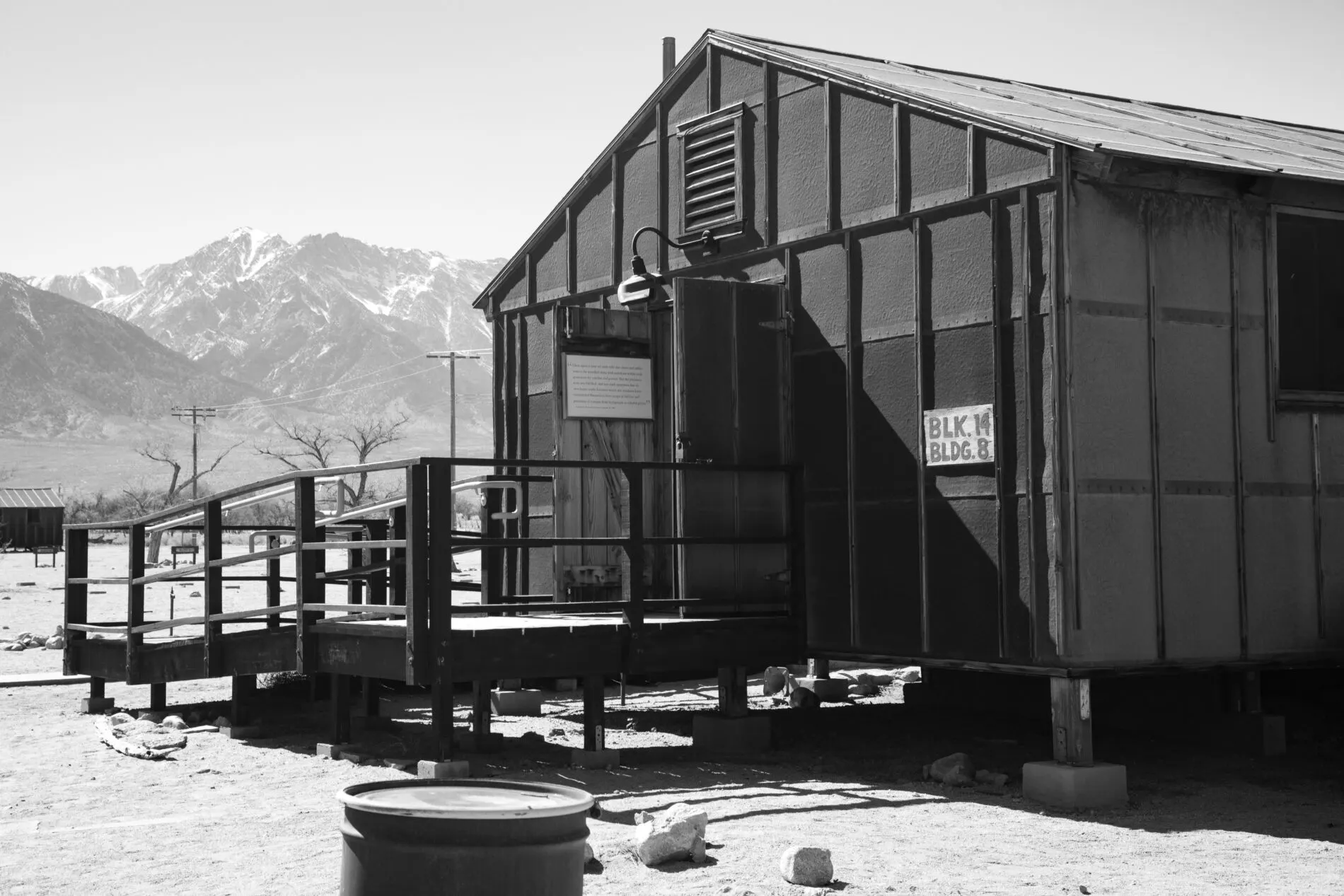
While Manzanar was pretty much useless land, the original drainage and concrete conduits were still in place putting the site high on the Army’s list. After quite a bit of back-and-forth wrangling between the US Army, the city of Los Angeles, and the residents of Owens Valley, the Army ended up buying the land in 1942 and building the detention center there.
The center stayed in operation for about three years, between 1942 and 1945. After the remaining internees were released, the camp was mostly dismantled and by 1952, the only buildings remaining were the two stone guard shacks at the entrance and the auditorium. In 1992, when Manzanar was finally designated a National Historic Site, the auditorium was repaired and repurposed as the visitors center.
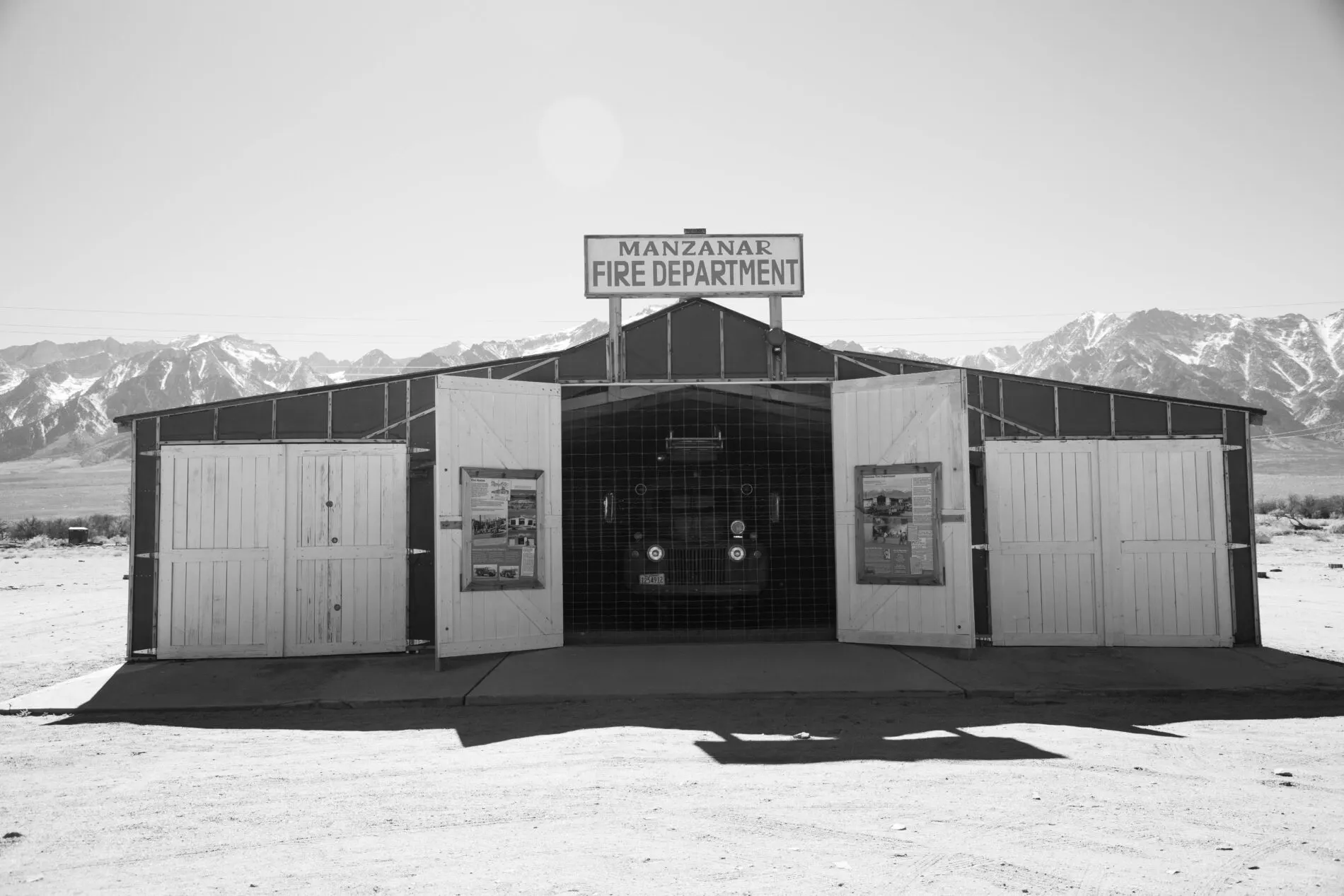
Where is Manzanar?
Manzanar is located in the Owens Valley about 220 miles north of Los Angeles. It lies just off Highway 395 on the edge of the Alabama Hills between the small towns of Lone Pine in the south and Independence to the north. Death Valley National Park is about 60 miles to the southeast.
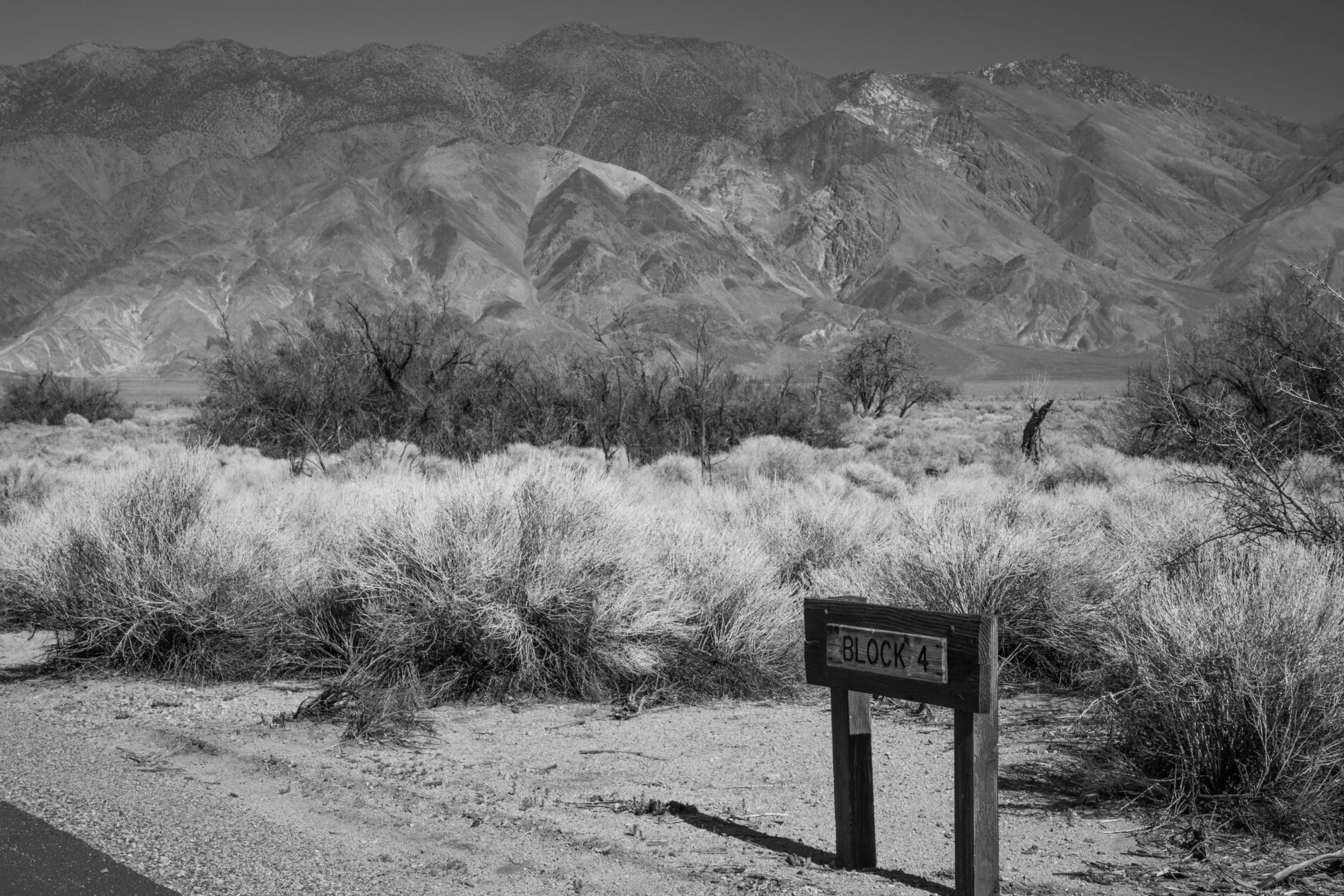
What to Expect at Manzanar National Historic Site
Manzanar Historic Site is a solemn reminder of the Japanese American internment that occurred during World War II. Visitors to the site can expect to see a variety of exhibits that tell the story of the internment experience. The Visitor Center houses artifacts, photographs, and interactive displays that share the history of Manzanar.
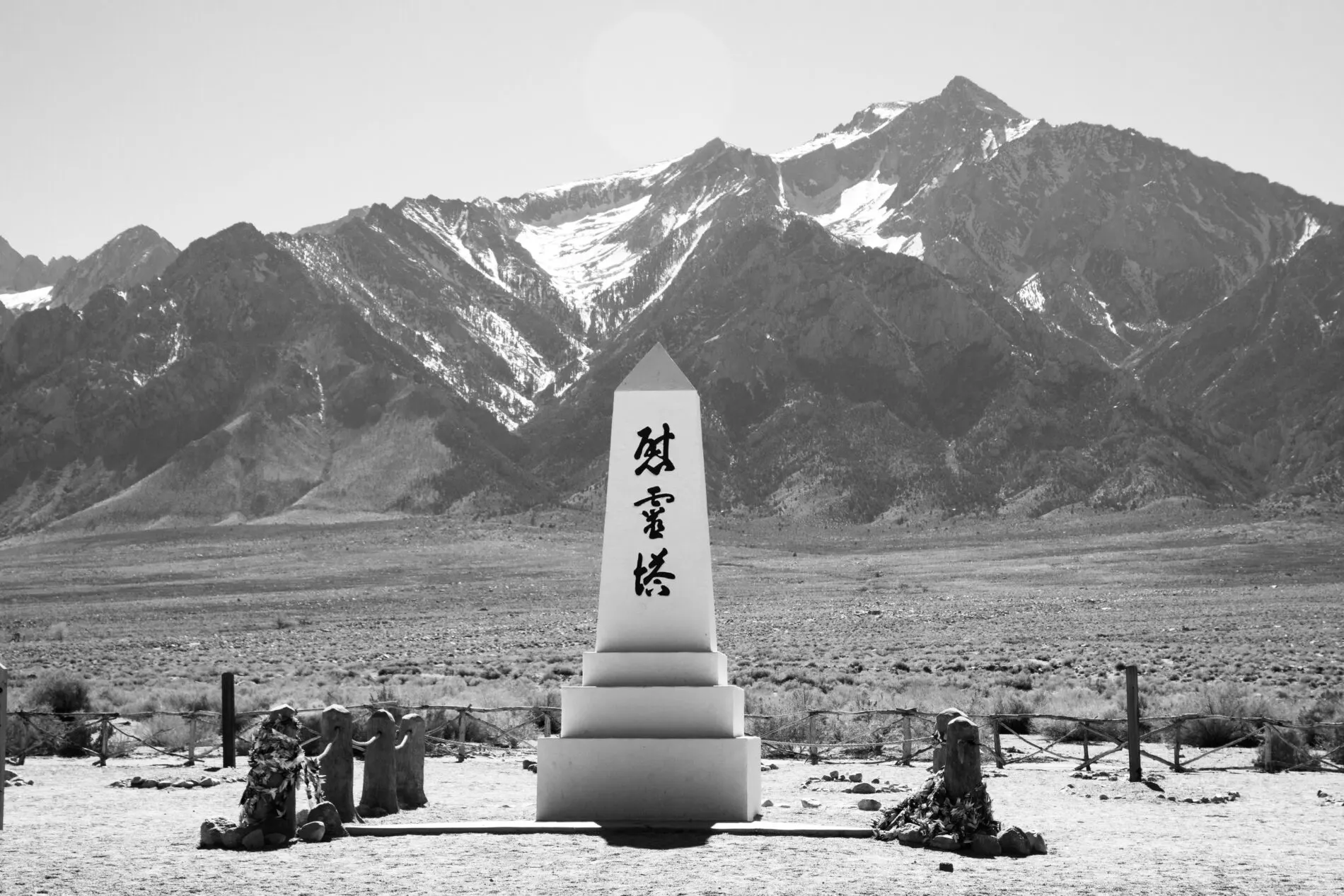
After watching the 22-minute film, Remembering Manzanar, visitors can take part in ranger-led programs or walk through the museum’s park-like grounds. These grounds contain over 400 acres of land with interpretive signs throughout providing more information on the internment experience as well as cultural activities such as fishing, baseball, gardening, and music.
The camp has little left, but there are a few reconstructed residential buildings or “blocks” that used to house multiple families. These buildings now serve as interpretive centers, which are open to visitors all year round, from sunrise to sunset. We also found the self-guided driving tour was a good way to see the camp with stops at the old gardens, the kitchens, and the cemetery.

Manzanar Operating Hours
- Visitor Center – 9:00 a.m. to 4:30 p.m. every day, Closed on Christmas
- Block 14 buildings – 9:00 a.m. to 4:15 p.m. every day, closed on Christmas
- Manzanar grounds and driving tour – every day sunrise to sunset

Is it a Good Place for Kids?
For a full understanding of U.S. actions in World War II, parents will want to educate their children about the Japanese internment camps, even though there is limited information available. Visiting Manzanar is definitely one way to do this, and along the way, kids can earn a junior ranger badge.
Another way is to read a book I recently read, “Farewell to Manzanar,” which is a diary of a young girl’s experience in the Manzanar camp and how it impacted her and her family. The book details her life after the notification of the relocation, life in the camp, and even life after their internment. It’s educational and fun to read; I recommend reading it with your children or on your own.

Other Things to Do Nearby
Like us, most people will be visiting Manzanar as a stop before a trip to Death Valley National Park. It is an easy side trip on your way in or out of the park through the west entrance. The other big attraction in the area is the beautiful Alabama Hills where most of Hollywood’s Western and cowboy movies were filmed. Following the same theme, the nearby town of Lone Pine is home to the Museum of Western Film History which shouldn’t be missed.
Some other California places you won’t want to miss:
- Antelope Valley California Poppy Reserve
- Ronald Reagan Presidential Library
- Alcatraz
- San Francisco Attractions
- San Francisco Hikes
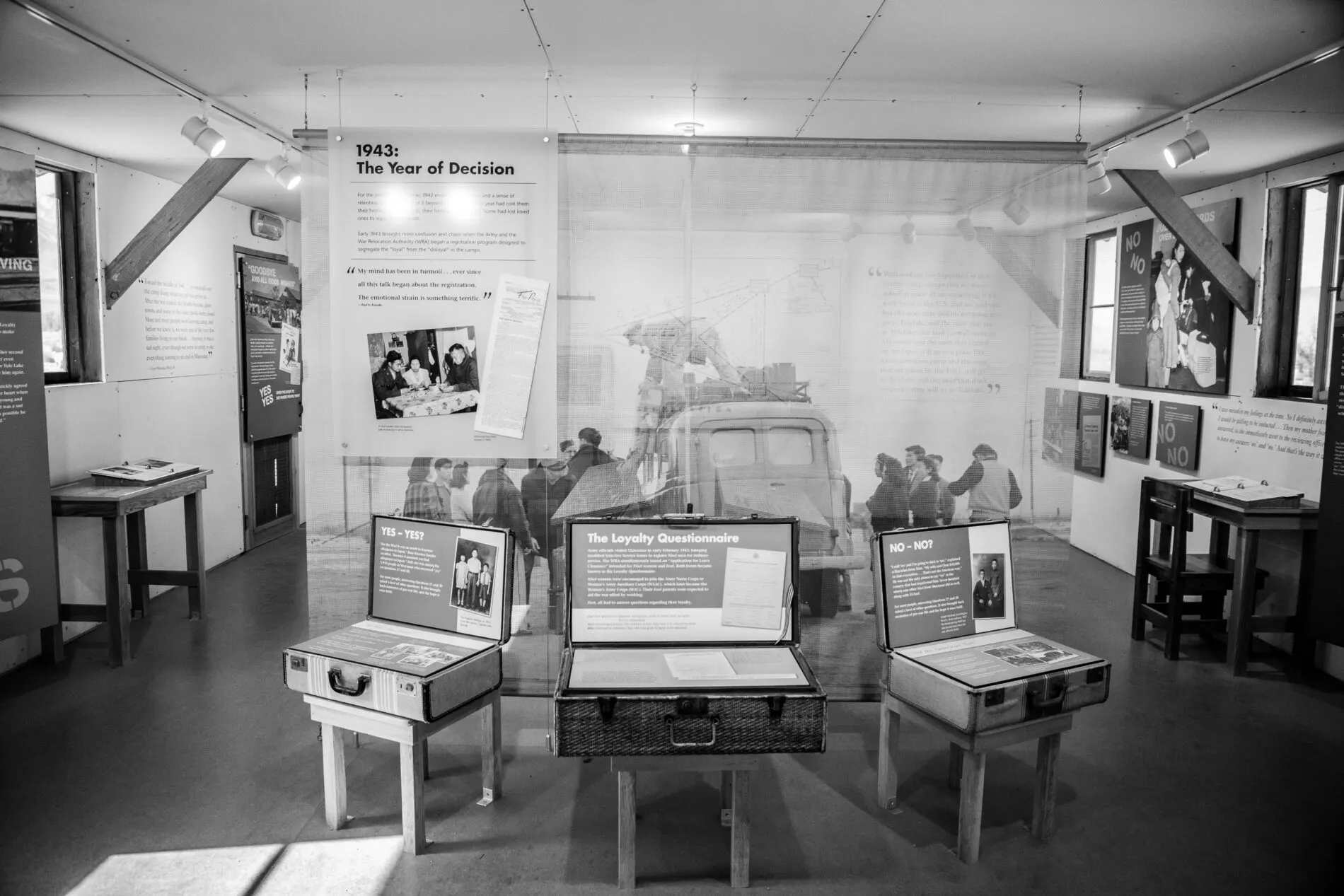
Where to Eat
There’s nothing at all for food options at Manzanar but just down the road in Lone Pine we found few really good options. For a quick and tasty lunch, the taco truck “Lonchera Los Plebes” is a must. The truck can be found in the parking lot near the Quality Inn Lone Pine Hotel and is open from 1:00 til 9:00 P.M.
For dinner, we were looking for a good sit-down meal but not finding many restaurants in the area. When we drove by Seasons in Lone Pine, we took a look but then kept on driving as it doesn’t look like much on the outside. However, after checking reviews we decided it was worth trying. Boy were we glad we did. The rack of lamb and the medallions of elk were both superb.
Where to Stay
As we mentioned before Manzanar on its own is not really a destination, however, the area is a good stopping point before or after a visit to Death Valley National Park. In fact, on our road trip we couldn’t get accommodations inside the park so opted for the Quality Inn Lone Pine Hotel.
This is the same hotel used by movie stars and film crews during the location shooting of all those Western movies shot in the Alabama hills. The rooms were comfortable, clean, and affordable and the swimming pool was a welcome oasis after hiking around the hills and exploring Manzanar.
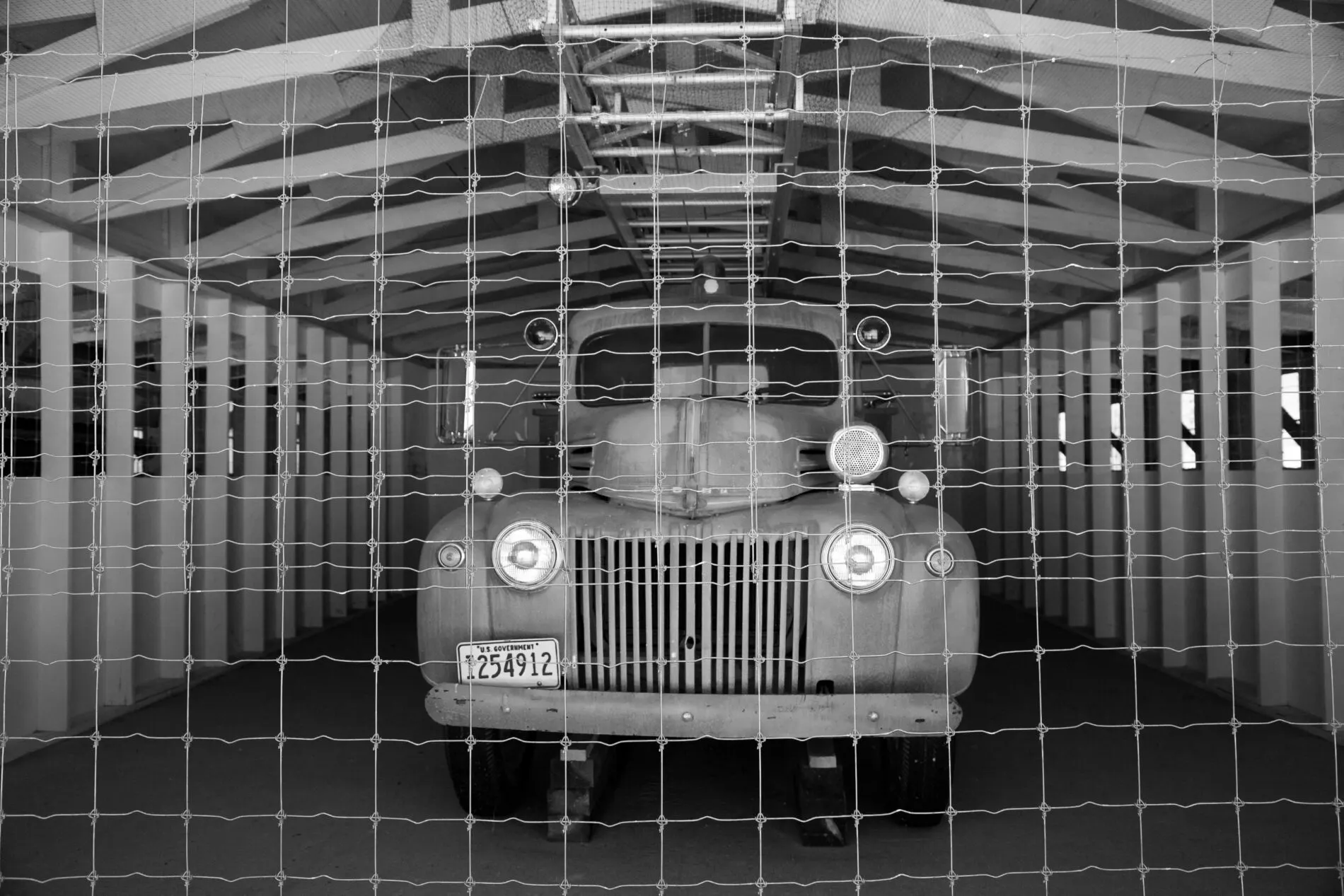
Conclusion
The Manzanar Historic Site is one of those national parks that is well worth a trip. Kids and adults alike will learn all about one of the darker aspects of the U.S. during World War II. The hotter, drier, and starker the trip is will just reinforce some of the hardships of our fellow Americans.
Author Bio – Corinne is an avid camper and traveler. She’s been to all 50 of the US states and has four more Canadian provinces to visit. However, she’s not stopping yet. There’s always more to see of this great continent! Corinne loves local foods, getting outdoors, landscape photography, and road trips.
